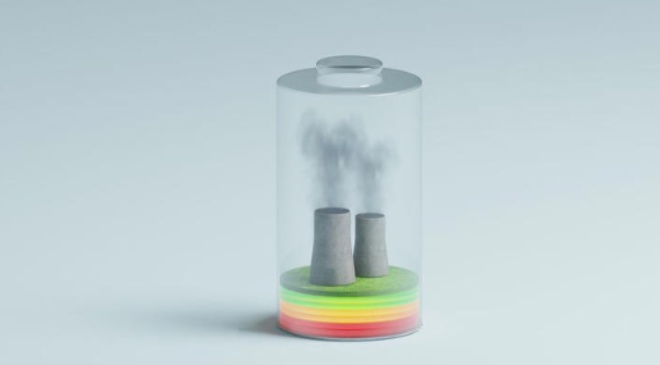- A small nuclear reactor in France found no evidence of sterile neutrinos, the ever elusive fourth neutrino.
- Neutrinos are the second most common particles in the universe, but they’re very hard to spot.
- The new study doesn’t completely rule out the existence of sterile neutrinos.
Neutrinos are everywhere—literally. They’re one of the most common particles in the universe (second to only photons, a.k.a. light), and billions of them are passing through your body right now. But neutrinos rarely interact with other particles—after all, they’re neutral—so they can be extremely hard to detect.
Also Read– How to stop an iPhone dropping Wi-Fi connection
Despite neutrinos’ ubiquity in the known universe, there’s still a lot we don’t know about them. Right now, physicists are aware of three kinds of neutrinos: electron, muon, and tau, each related to their respective particles. Because these particles have mass (a very, very, very small amount of mass), they can change into any of these different “flavors” of neutrinos.
However, for years, a hypothetical “sterile neutrino” has made the rounds as an explanation for prediction deficits of recorded neutrinos issuing from nuclear reactors. In 2011, two groups of theorists estimated that nuclear reactors pumped out 6 percent percent less neutrinos (technically “antineutrinos,” but let’s not go down that rabbit hole) than expected and theorized that maybe these electron neutrinos transformed into sterile ones.
Experiment after experiment searched for these neutrinos, and because they only interact gravitationally, sterile neutrinos are even harder to detect than others, but they came up with nothing. Last week, however, researchers at the Max-Planck-Institut für Kernphysik (MPIK) and Laue-Langevin Institute in Grenoble, France, added to the growing pile of evidence against the sterile neutrino. In their experiment, scientists at the small research reactor used a neutrino detector called STEREO to see if they could detect sterile neutrinos. Their results were published in Nature.
Also Read– When You’ll Get Your W-2 Form for Income Taxes, and What to Do if You Don’t
Because lower-energy neutrinos should change more quickly compared to higher-energy ones, the idea is that “the spectrum of energies of electron neutrinos” should change over time, according to Science. However, STEREO found no change in this energy spectrum, ruling out sterile neutrinos as an explanation. Instead, the most likely explanation for this persistent neutrino shortfall is likely bad data.
“In the years 2017 to 2020 we were able to observe a total of more than 100,000 neutrinos, but did not detect any trace of possible sterile neutrinos in these measurements,” MPIK researcher Christian Buck said in a statement. “Most likely, the observed anomalies result from underestimated uncertainties in the core data from the radioactive decays used for the flux prediction, and not from the neutrino experiments themselves.”
Because of neutrinos’ pervasive existence throughout the universe, understanding all of their quirks is extremely important for fleshing out, or even challenging, the Standard Model of Particle Physics as well as exploring other elusive particles like dark matter.
Also Read– What A Dinosaur’s Fossilized Intestines Reveal About Other Dinosaurs
Researchers aren’t entirely ruling out the existence of sterile neutrinos just yet, but for now, they remain lost among the rest of the cosmic mysteries that surround us—that is, if they exist at all.































